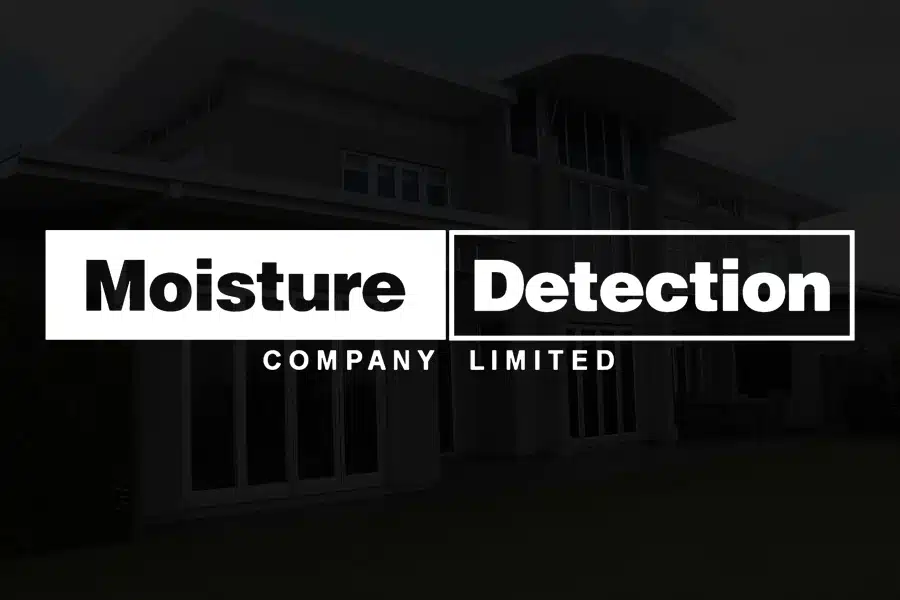It’s challenging deciding whether to buy a house with monolithic cladding. You will be uncertain about possible leaks, decay, and repairs. Moisture Detection helps you make the right decision with a thorough weathertightness inspection.
Weathertightness Inspections
Find leaks and decay before you buy
Book a Pre-Purchase Inspection for Weathertightness
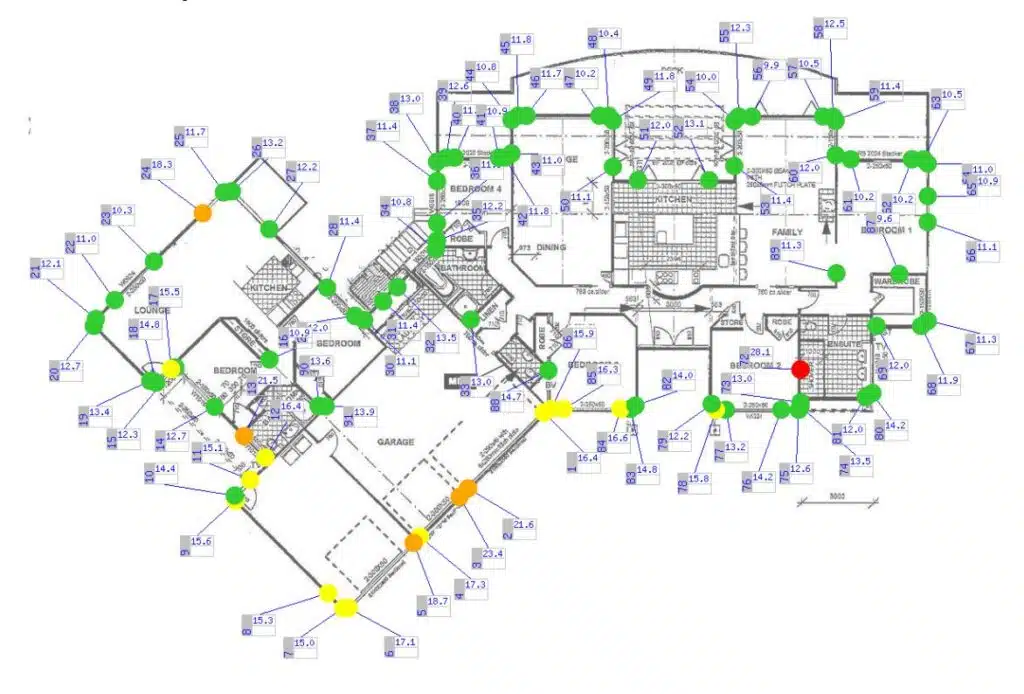
Weathertightness: Three Things You Need to Know
A detailed Weathertightness Inspection from Moisture Detection Company addresses the uncertainty you feel when looking at houses to buy by answering the three key questions:
- Is the house leaking?
Monolithic clad houses in New Zealand have a reputation for being ‘leaky homes’ however many are sound, and only have a few small problems that are easy to resolve. These are the ones you should buy! Find out if and where the house leaks before finalising your offer. - Is there any rot or decay in the house?
Moisture getting into house built with timber that is not durable will cause decay. In some cases, the decay is extensive, requiring expensive repairs or even re-cladding. However, in most situations the decay is easily managed by post-treating the timber, or through isolated timber replacement. Find out about possible rot in the house before you buy. - Is the house built using treated timber?
If the house is built with untreated timber or undertreated timber, the risk of decay is much greater. Therefore the house is a greater risk for you to buy. You must find this out before committing.
The answers to these questions help you to be sure whether to proceed with the purchase, and know how much the house is really worth.
Why Choose Moisture Detection Company?
Only Moisture Detection Company can answer these questions for a buyer.
Builder’s Reports and Pre-Purchase Reports are ‘visual only’ and can’t tell you about leaks and decay between the walls.
A detailed Weathertightness Inspection from Moisture Detection Company, before you buy your new home saves you a lot of money and heartache.
In many cases, banks demand a Weathertightness Inspection Report before they will lend money on a plaster clad home.
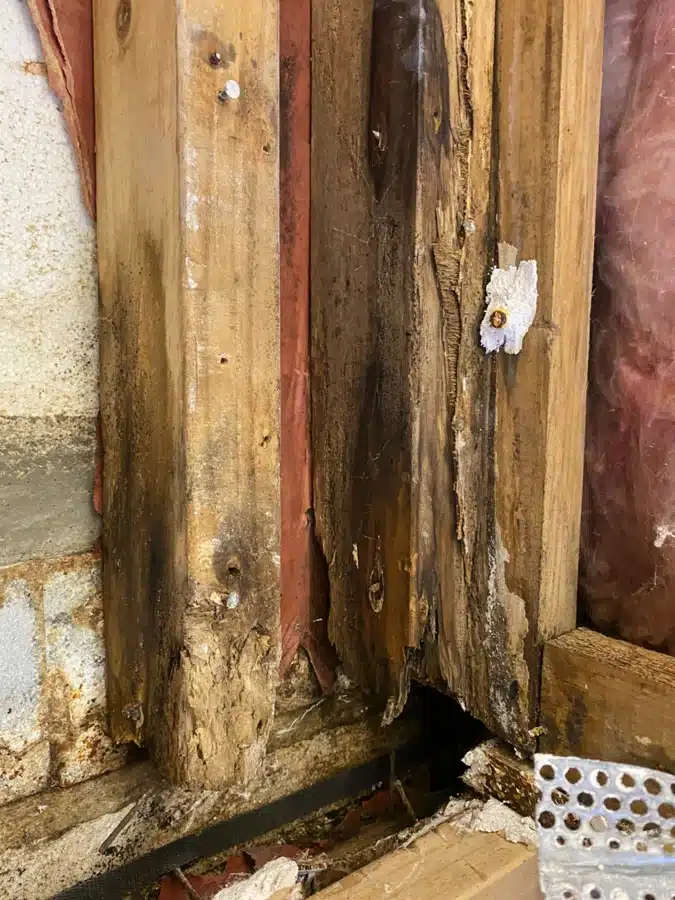
What if this was happening behind those freshly painted walls?
Thermal imaging camera and hand held scanners missed this completely.
Patented Technology for Weathertightness Inspections
Since 2005, Moisture Detection Company used their own patented technology to identify leaks and decay that no one else finds without literally pulling the house apart – and no vendor would ever let you do that.
Initially, during the height of the leaky building crisis, MDU Moisture Detection Probe Systems found leaks and decay so that owners could make claims against councils and builders for faulty workmanship. The proof provided was so strong that it was used as evidence in dozens of successful court cases and MBIE Determinations.
Moisture Detection Company use the same technology for buyers and owners of plaster-clad homes to find, diagnose and repair moisture and decay problems. These are the big issues that cost you a lot of money to resolve in the future.
Other companies use tools that can be fooled, such as thermal imaging or surface moisture scanning. Or they cause extensive damage to the house, like cutting out cladding or gib board.
Moisture Detection Company goes straight to the heart of the matter – we measure the timber treatment levels, the actual moisture content and the decay condition right inside the framing timber – everywhere there might be a problem AND with minimum impact on the house.
AND… we can leave a moisture monitoring system in the house so that it can be easily re-tested at any time to check that repairs have been successful or to find any new leaks.
AND… once you buy your house, we can assist with weathertightness repairs, modifications and in-situ timber treatment to make your new home safe and dry.
Talk to the Experts
What About Thermal Imaging?
Thermal imaging has been around for a while now and the concept seems perfect. Where there is moisture, the wall will be cooler, and this will show up on thermal imaging. However in reality, we just see too many leaks that are not getting picked up and lots of false ‘leaks’ that end up being OK.
Here is what Bob, one of our clients recently wrote to us:
The home owner provided a thermal imaging property inspection report. As a condition of the purchase agreement, I required a second thermal imaging report from another company. This second report identified two locations of concern. The home owner kindly agreed to allowed gib board to be removed for inspection of the framing in those two locations. After those proved satisfactory my purchase of the house was completed.
Post purchase I approached Moisture Detection to inspect my house and install probes. That was the best decision I have ever made. Sadly, a number of high moisture areas were identified, clearly none detected by the thermal imaging. I have no hesitation in recommending Moisture Detection to any current or potential plaster home owner.
Which Weathertightness Inspection is Right for You?
Moisture Detection Company offer several levels of inspection and reporting.
Simply put, the more inspection we do, the more information we find out about the condition of the house. More information equals more certainty and less risk that you are paying more than you should.
Please note that taking samples and conducting any type of invasive testing will require the permission of the vendor.
Timber Treatment Testing (from $295 plus GST)
No one should ever buy a plaster clad house without knowing about the timber it is built from. Our Timber Treatment Testing service will tell you.
Having untreated timber is the biggest and potentially the most expensive risk factor when buying a house built between 1992 and 2005. Untreated or undertreated timber massively increases the risk of decay damage. The possible cost of repairing this and loss of house value has to be factored into your buying decision.
We discreetly take timber samples from several locations around the house and test them in our laboratory for the most common treatments used in the timber industry.
You find out whether the timber is treated, the type and amount of treatment used, and what this means for the house and your investment.
Detailed Visual Weathertightness Inspection
For an overview on weathertightness, likely defects and the risk factors, this cost-effective detailed visual-only inspection helps you decide whether to move on, or stay interested in the house.
The inspection includes:
- Visual inspection of the windows, walls, roofs (where safe to do so), decks and subfloor (where accessible) to identify potential risk factors and faults with the design, construction or flashings
- Visual inspection of surfaces for evidence of dampness, cracking or decay
- Surface scanning with a moisture meter to identify anomalies that may indicate leaks
Normally, we provide a verbal report giving comprehensive feedback on the overall weathertightness condition of the property and the risks that may be involved in owning it. A written report is available on request at additional cost.
We recommend you accompany our inspector if possible to ask questions and improve your knowledge of plaster clad house construction, design and risk. This information is freely given without extra charge.
This inspection is usually accompanied by Timber Treatment Testing.
Invasive Moisture and Decay Investigation
In addition to the detailed visual inspection above, we can investigate locations we suspect may have leaks and/or decay using discrete invasive testing methods.
Many Pre-Purchase Inspection Reports recommend invasive testing by a weathertightness expert to investigate defects or high moisture scans found during their inspection.
Few vendors allow the standard invasive testing method, which requires cutting out sections of gib or cladding. However, most vendors who are motivated to sell and have nothing to hide, should allow our discrete invasive testing.
This is done by drilling a small hole through the skirting board and into the bottom plate – where moisture from leaks accumulates and where decay usually starts.
The drillings from the hole are collected and analysed for decay. An MDU Moisture Detection probe is inserted for accurate moisture measurements.
From these investigations, we provide you with a high level of certainty about whether there are current or past issues at the locations we investigate. This proves whether the areas are actually defective. We can estimate any repair costs for you to factor into the final sales price.
The probes can be removed and the holes filled with repair filler. Or, they are left in place to be read again in the future.
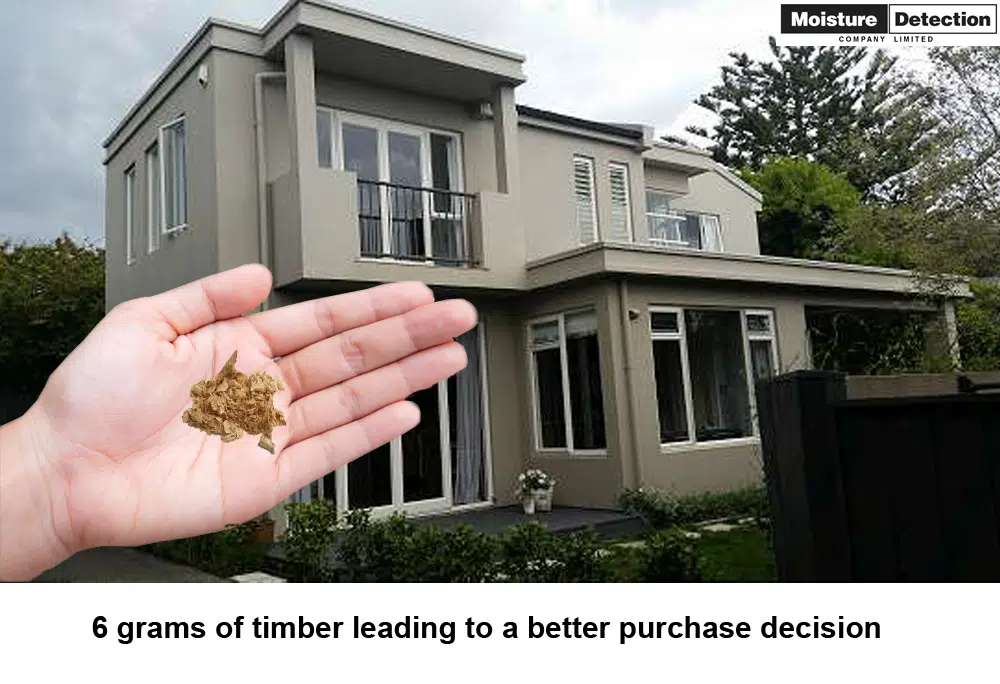
Full Invasive Investigation with Moisture Probes (from $1,950 plus GST)
This is recommended once you have made an offer conditional on “due diligence” or ‘weathertightness inspections’ and you need to know whether to proceed and how much you should pay (read more)
If there are defects in the house, either you have to pay to fix them or the person who eventually buys the house from you is going to offer you less. Either way, it shouldn’t be your problem or your cost.
A Full MDU Moisture Probe System Installation involves installing small Mdu Moisture Detection probes through the skirting boards in all locations around the house where a leak may occur or may have occurred in the past. There may be from thirty to eighty probes depending on the size and complexity of the house. We have done thousands of these and there is minimal disruption or damage.
The outcome for you is a detailed report showing the moisture and decay levels at key locations all around the house. The timber treatment levels are tested and reported. A verbal report is provided to you and all data is available online to download or view.
If any problems are found, budget cost estimates for repairs are provided to assist you in negotiating a fair price with the vendor.
The MDU probes stay installed in the house and these can be read at regular intervals to build up a history proving that the house you are buying isn’t leaking.
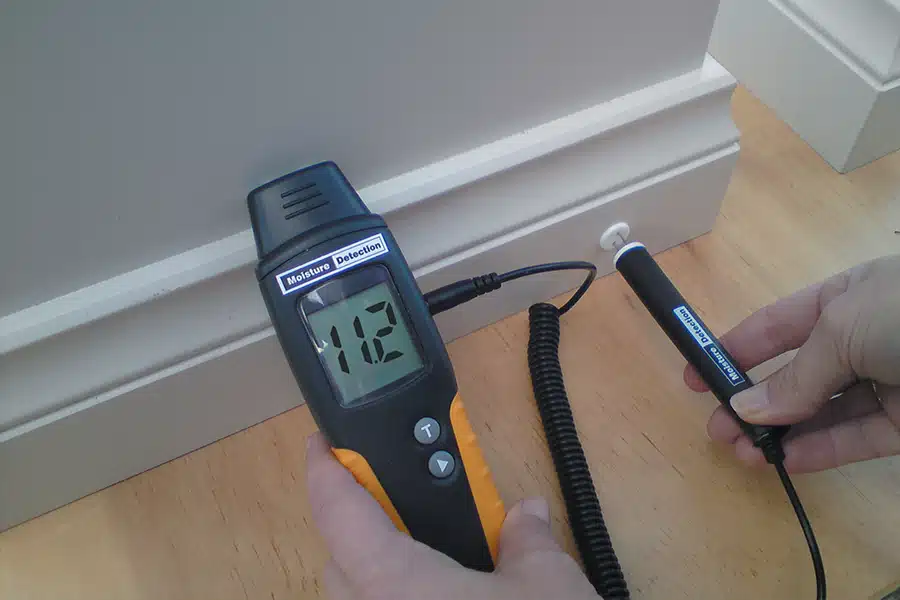
What happens after you buy your house?
Once you buy your new home, we strongly recommend that the MDU Moisture Detection Probe System is installed (if this hasn’t already been done). This accurately identifies any issues to keep your new house safe and dry, and to maintain its resale value.
These patented probes are an early warning system to pick up leaks before they turn into costly decay.
More information is available here.
Ready to order a weathertightness inspection?
Get help from weathertightness experts. Contact us to find out whether that house you are going to buy or sell has problems caused by leaks.

